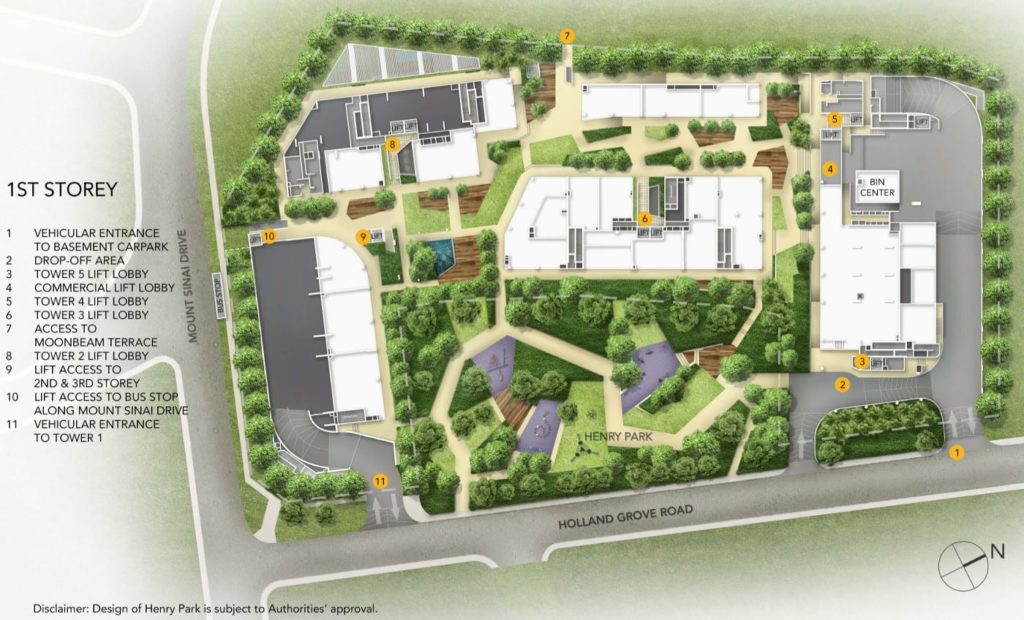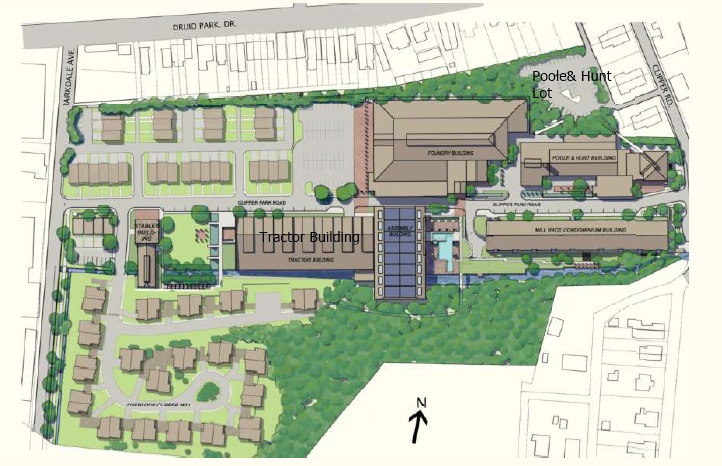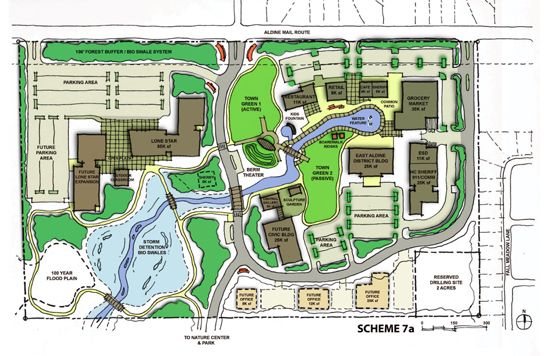If you’re considering a commercial building project, you might be asking, “Where do I start?” This guide to site plans for commercial developments is an excellent starting point.
Common questions about commercial site plans, also called commercial plot plans, are:
- What is a commercial site plan?
- What is the purpose of a site plan?
- What information is on a plot plan?
- Where do you get a commercial site plan?
- How much does a commercial plot plan cost?
A commercial site plan is a drawing of the intended use of the property – how you plan to develop and modify it. Your starting point might be vacant land, a parking lot you want to carve out-parcels from, an existing building you intend to modify or any other commercial project.
Note: If your project is a residential project, this is the guide to start with: https://www.24hplans.com/the-ultimate-site-plan-guide-for-residential-construction/
A Commercial Site Plan is your Project’s “Big Picture”
Any building you’re planning has a floor plan showing how the interior space will be allocated.
Your commercial plot plan shows how the entire property will be portioned, focusing on exterior details.
Here are the big pieces of a commercial site plan.
Basic Information: The commercial plot plan often includes the names of adjoining streets or neighboring businesses. And many include the address and/or legal description. It answers, “where is the property?” and “what property are we talking about?” for officials and contractors viewing it.
Infrastructure: The plan shows where current and future utilities are/will be located. On a commercial property, there are a range of utilities going into and out of a building – Water, sewer, power, communications and much more.
Everyone involved in executing the building plan must know exactly where these utilities are, or chaos will ensue. It answers, “what do we have to work around?”
Building site: The property’s boundaries and dimensions must be shown, the construction footprint with its basic specs is drawn plus a long list of essential elements that varies by the project. See the section below What Goes On a Site Plan?
It answers, “what’s already there?” and “what’s going to change?”
A Commercial Site Plan Is Required for Permission
You probably already know a commercial plot plan must be submitted as part of your application(s) for the building permit.
But why? Several departments will want to see your site plan, and they will have to approve the plan for the permits to be issued.
Planning/Zoning
Commercial site plan requirements are quite detailed, and they var slightly from place to place.
In researching the issue, we found that the commercial site plan checklist from Mobile County, AL is typical for most municipalities. These are the things your local officials will want to know – things the plot plan will show them.
Mobile County’s requirements say, “Site plans are administratively reviewed for four categories: floodplain management, subdivision compliance, traffic management and access, and general engineering design, including drainage.”
- Floodplain management – Most commercial property is not on a floodplain, but nearby floodplain areas must be considered, because large parking lots shed an enormous amount of water.
- Subdivision compliance – Subdivision requirements are a nest of rules and regulations that must be carefully followed. This is where an experienced general contractor will really earn their money.
- Traffic management and access – Officials will work with you to develop a plan for how traffic will flow in, through, out and around your property.
- General engineering design – This is a catch-all phrase for all the other site planning required, such as lighting, sidewalks, drainage pathways, sewer covers, retention pounds and other property features required for a successful project that fits well into the surrounding zone.
Mobile County adds that, “Site plan submittals are required to be signed and sealed by an Alabama Registered Professional Engineer.” A similar requirement exists in most counties and large cities.
However, it doesn’t mean the engineer has to produce the drawing. In most cases, cost will exceed $750 when an engineer supplies the plan. Commercial site plan specialists, like 24H Plans, can produce a plan much more affordably. Our commercial site plan specialists can complete the drawing for submission to an engineer that can review, sign and seal it for official use.
Water/Sewer
Many commercial buildings need a large supply of fresh water. Of course, they also send a lot of gray and black water to the sewer. Water in, water out.
The water/sewer officials where you live will examine the plan and decide where the best locations are for connecting to municipal water and sewer, if those connections don’t exist but are part of the plan.
Your Architect
All of this is essential information for a commercial architect drawing blueprints that will guide contractors through executing the project and bringing it to life.
If you’re building, then an architect will want all the information supplied on the site plan including direction, topography of the property, what’s there and what’s planned, and a good idea of what the surrounding area includes. No doubt, the architect will also visit the site to get everything right.
General Contractor, Excavator and All Subs
The site plan is an important part of what the architect uses to create the building plans. The general contractor (GC) overseeing the project is then in charge of executing the plans.
The GC is responsible for ensuring it is carried out by excavators that need to know where to dig for water and sewer pipes and every other subcontractors that will work on the project.
What Goes on a Site Plan?
What is included on a commercial site plan varies from place to place, but most planning and building departments require these types of information:
- A vicinity map showing surrounding properties and a directional arrow. Most require the property’s legal description.
- All adjoining streets and alleyways including access locations to and from them from the property. The dimensions of these access points should be listed if they are being newly created. See your local codes for required minimum and maximum widths of these access driveways and entryways.
- How water will flow in the parking lot and to where it will flow, such as storm sewers, drainpipes and/or a retention pond – and show the location of those features whether existing or proposed. Mobile County spells it out this way, “The site plan shall provide appropriate notes, details, and methods for the prevention of sediment laden storm water runoff or eroded materials from leaving the construction site. A grading plan shall be provided demonstrating site layout.
- Sight distances at any intersection and entrance.
- Existing and proposed contours, and labeled whether already there or planned
- All site improvements including dimensions and proposed construction materials
- Type of surface materials to be used – what the parking lot shall consist of.
- Existing and proposed structures, each labeled.
- Proposed location of dumpsters, if food will be prepared on site, lighting posts and sidewalks.
Planning for Growth
If you have the entrepreneurial mindset needed to undertake a commercial development project, then the growth of the business you’re planning must be considered.
You don’t want to be hindered by:
- Running out of room at your current location with no option to expand
- Having to move locations in order to grow
Neither is ideal, though if your growth is beyond what you expect, then it might be necessary.
But to do all you can to stay where you first locate with the ability to expand, choose a site and develop it in a way that allows for growth.
Can you expand on the site?
If so, can you expand the building’s footprint within required setbacks – the distance the structure must be off property lines – and still meet your needs?
Does the location have parking to support a growth in traffic, or is there sufficient parking on adjoining streets or in nearby public parking lots/structures?
Parking Lot Particulars – The Parking Lot Site Plan
Creating parking areas is one of the most challenging aspects of commercial development. Your local officials will want to know how you plan to accommodate the number of vehicles you expect to draw.
If you’re designing a commercial parking lot site plan, here is what it should include.
- Lot shape with dimensions for all sides.
- Surface type – asphalt or concrete, for example. The thickness or concrete PSI might also be required.
- Topography, drains, retaining basins, and features related to water run-off. This is essential since water doesn’t drain through asphalt or concrete surfaces.
- Parking angles – You’ve likely noticed that some parking lots have parking spaces at a 90-degree angle to driving lanes. Others have spaces at an angle of about 45 degrees, which allows for driving aisles to be narrower. Your city or county will have guidelines on your options for how to lay out the parking area.
Site Plans Help You Envision Tomorrow
A professionally prepared site plan, at under $200, is an affordable view of the potential the site offers. Whether or not you choose the site might depend on these issues:
- Is it large enough? Too large for a start-up?
- Is there enough parking?
- Are the surrounding businesses compatible with yours, so will they “feed” your business – and your business feed theirs? That’s ideal.
- What is it like to get in and out? Relatively easy? Or a complete nightmare? Be practical while keeping your vision in mind. When your vision finds a suitable location that fits the practical necessities, perhaps you’ve found your site. That’s an exciting day!
- Are your “1-year, 3-year, 5-year” growth goals compatible with this site? In short, will the building and parking areas accommodate significant growth?
It makes sense to have commercial site plans made for all the sites you are considering. At a small cost, the plans for each site you’re considering will help you envision how each site will contribute to or hinder your success.
Getting Your Site Plan
Commercial site plans / plot plans are available at 24H Plans at prices well below what commercial engineers charge.
In fact, commercial engineers use us to have their plans made.
Commercial Site Plan Cost
The $750 or more many engineers and architects charge is too much. Our plans cost less. They are produced with the same technology and software – they look the same at a much lower cost.
Why 24H Plans?
This is our specialty. It’s what we do. Our dedicated plot plan creators have access to the documents and Global Information Systems (GIS) data including satellite images needed to create an accurate site plan acceptable to your planning/zoning/building departments and to help you visualize the property as you consider your options.
24H Plans is well-equipped to deliver to you a commercial site plan that will give you a clear view, a from-above-overview, of the property you’re considering or planning to develop. The site plan allows you to review and evaluate your options.
- If you’re not locked into it, consider having plans drawn for your top two to four sites. Having the view of all of them will assist you in choosing the right one for your goals. Can we grow at this site? Will our clientele “fit” here given what surrounds it? The cost is an investment in getting right a huge part of your plan – location, location, location.
Having commercial site plan drawings made of all the sites you’re considering will help you compare their important features, so you can evaluate their potential for fulfilling the vision you have.
We Can Do That
View our site plan options to decide which fits your goals – probably Medium or Complex.
We use today’s best technology to create accurate commercial site plans that are accepted every day by local departments making decisions about building projects.
We’re here to help. What can 24H Plans do for you? Order a plan or plans, and take the next big step towards your success.
Conclusion:
Here’s how we can help: 24hplans has a team of highly-trained, professional architects and drafters who can prepare any kind of site plan in the shortest amount of time possible, so that you can easily obtain that building permit and get on with your project. Use the promotion code: 24hplans-20off to get a 20% discount off any package. — Please note this is a limited time offer, exclusive to the readers of our blog. This offer is not being advertised anywhere else.





Leave A Comment